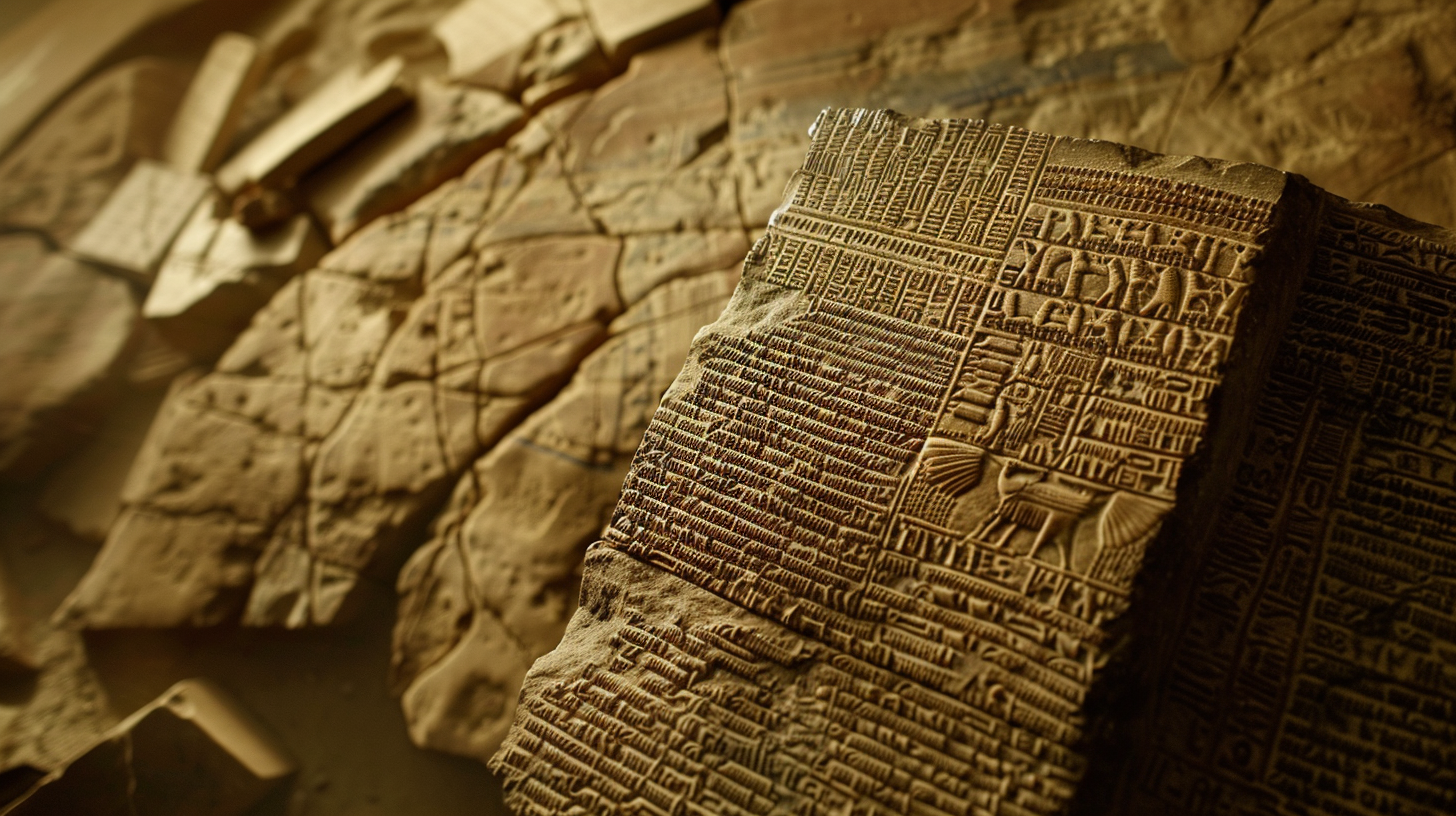Immersed within the historical annals stands the mysterious Sumerian civilization of Mesopotamia, celebrated for their mastery of mathematics and technology. Throughout the ages, scholars have pondered the complexities of their achievements. Some speculate that the intricacies of their progress suggest a level of sophistication beyond a single society’s capabilities. Could it be plausible that the Sumerians received mathematical and technological knowledge from entities beyond Earth?
At the heart of the discussion lie the exceptional mathematical and technological skills displayed by the Sumerians. In mathematics, they intricately designed a numerical system based on a sexagesimal (base-60) structure, laying the foundation for modern timekeeping and geometry. Their utilization of cuneiform writing to document numerical data and mathematical calculations further highlights their solid grasp of mathematical concepts.
Furthermore, the Sumerians made remarkable strides in technology. They introduced the wheel for transportation and irrigation, transforming agriculture and trade in the region. The construction of ziggurats and massive structures exhibited their engineering expertise and comprehension of architectural principles.
Supporters of the extraterrestrial intervention theory present diverse evidence to support their claims. One significant observation is the sudden appearance of advanced knowledge and technology within Sumerian civilization, seemingly out of nowhere. Some argue that this rapid progress indicates external intervention, as it would be unlikely for a relatively basic society to achieve such milestones independently.

Moreover, proponents of this idea emphasize anomalies in Sumerian texts and artifacts, suggesting encounters with beings possessing advanced knowledge or technology. Some Sumerian texts tell stories of deities descending from the sky in flying vehicles, reminiscent of modern UFO sightings. Portrayals of figures dressed in attire similar to contemporary spacesuits have fueled speculation about extraterrestrial contact.
Going beyond textual and artistic hints, advocates of the extraterrestrial involvement theory draw comparisons between Sumerian advancements and technological achievements in other ancient civilizations. Questions arise about how civilizations such as Egypt and South America obtained knowledge and technology, hinting at similar occurrences.
However, skeptics offer alternative interpretations for the Sumerians’ proficiency in mathematics and technology, highlighting the ancient society’s creativity and resourcefulness. They propose that the Sumerians were keen observers and problem solvers who honed their knowledge through experimentation, observations of natural phenomena, and practical applications.
Furthermore, critics warn against attributing the successes of ancient civilizations solely to external influences, as it diminishes human ingenuity and contributions. They argue that, similar to other ancient cultures, the Sumerians exhibited remarkable innovation and discoveries independently.
Another viewpoint on Sumerian mathematics and technology suggests that their progress stemmed from cultural exchanges and interactions with neighboring civilizations. Mesopotamia served as a melting pot of cultures, with trade links connecting Sumerian city-states to distant regions. It is possible that the Sumerians adopted ideas and techniques from other cultures, adapting them to meet their needs.
In conclusion, the discourse surrounding the Sumerians’ expertise in mathematics and technology illuminates the enduring fascination with ancient civilizations and their achievements. Whether the Sumerians received external assistance or not, their legacy stands as proof of human ingenuity and the unwavering pursuit of knowledge and innovation. Exploring the artifacts and writings left by the Sumerians, one certainty remains – the mysteries of this ancient civilization persist, captivating our curiosity and urging us to delve into human accomplishments and the potential influence of external factors.
